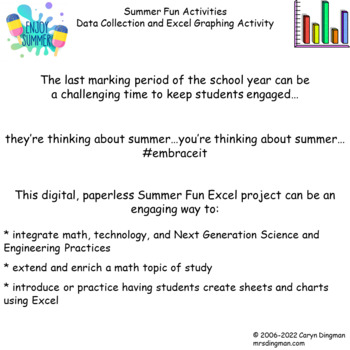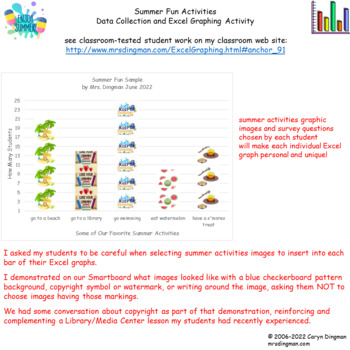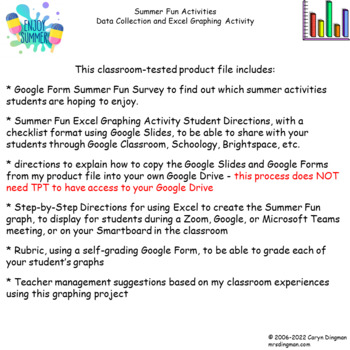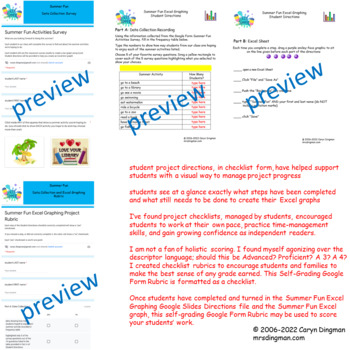Excel Graphing Summer Fun with Digital Student Directions
- PDF
- Google Apps™
- Excel Spreadsheets

Description
The last marking period of the school year can be a challenging time to keep students engaged…
they’re thinking about summer…
you’re thinking about summer…
#embraceit
This Summer Fun Excel project can be a perfect way to:
* integrate technology
* extend and enrich a math topic of study
* introduce students to creating sheets and charts using Excel
Project file includes:
* teacher notes/ classroom management suggestions
* digital survey, using a Google Form, to collect summer activities data
* digital student directions in checklist form, using Google Slides
* rubric, using self-grading Google Form, to grade finished graphs
* I’ve used this as a back to school project as well as an end of year activity
* my students were able to complete this project with two or three 15-minute small group center sessions
* My 5th graders completed this project as a performance task- small groups of students working independently on Chromebooks or desktop computers in rotating 15-minute turns during my 90-minute Math block, working at their own pace through the project checklist directions
* I’ve used this project with younger students, or students needing adaptations, in small groups as well- reading the project checklist directions aloud to those small groups for a 10 or 15-minute rotating center turn
Classroom-tested student samples may be viewed on my classroom web site:
http://www.mrsdingman.com/ExcelGraphing.html#anchor_91





